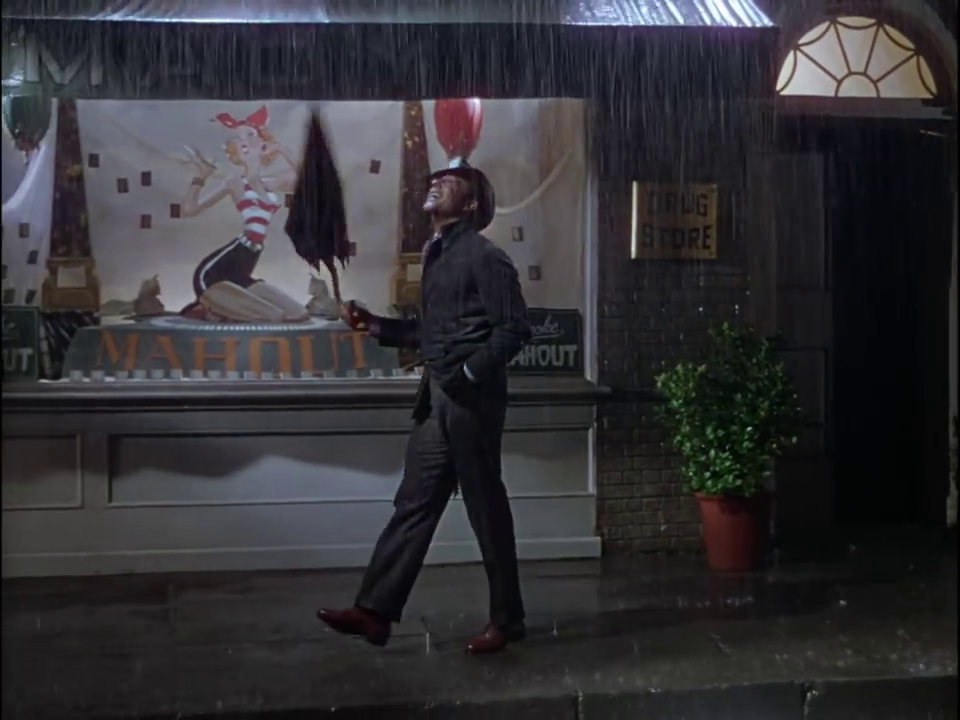Necessary Distraxion: The Partial Pleasure Principle & the Virtuality Complex
An Essay by Luke SafelyAbstract:
This paper takes a Lacanian approach towards spectators’ experience regarding distraction and pleasure within cinema. Slavoj Zizek’s interpassivity and Gilles Deleuze’s virtuality are expanded and applied to the relationship of distraction/pleasure and spectator experience, concentrating on the effects that it has on the future of cinema to come.
Bio:
Luke Safely is currently a letter carrier with a little extra time to think about things during his deliveries. He recently graduated from Minnesota State University of Moorhead with a BA in Film Production and a minor in Philosophy. His interests include experimental film theory/production, phenomenology, psychoanalysis, and post-structuralism.
Ruins of the Pleasureplex
Cinema, a space where one can live out their wildest fantasies and engage in their pleasures from the safety of their seat. No other previous form of art has captivated its spectator as strongly as cinema does to this day. Early cinema critics claim that this captivation is a plague of distractions that the spectator gleefully indulges in. The very thing that the audience is supposedly being distracted from by this imitation on the screen is the real. Cinema is therefore seen as nothing but an illusion, an accumulation of images projected at a certain speed, and if you were to put anything from the physical world next to this illusion, its captivating power would collapse and be lost. This illusionary distraction allows the audience to engage in their basic pleasures via the image and lose themselves to the real of the physical world, a new form of escapism to distract the masses from the injustices of their everyday lives.
Cinema has truly evolved since these early criticisms (it has even become an educational instrument for fighting injustice), and film criticism has developed into a serious field where things like gender, race, and sexuality are critically applied to cinema. Yet, even with these advancements, cinema is still often seen as a nothing more as an entertainment for the masses to indulge themselves. What is wrong with this though? It is only natural for us to want to satisfy our desires, especially when the toils of life constantly press against us; this indulgence is arguably necessary for our very sanity.
In his essay “Cult of Distraction,” Siegfried Kracauer criticized Berlin’s movie theaters for being “shrines to the cultivation of pleasure,” but with the evolution of cinema there was a shift in pleasure. The once grand pleasureplex has been abandoned and in its ruins is an entirely new distraction, a monstrosity that Kracauer could have not foreseen, the neglect of pleasure.
Abandoned House • Arena, ND. • 5/15/2016
Photograph by Lewis Ableidinger
In the beginning of Sophie Fiennes’ documentary The Pervert’s Guide to Cinema (2006), Slavoj Žižek says, “Cinema is the ultimate pervert art. It doesn’t give you what you desire, it tells you how to desire.”
With the public outcry against inadequate (or even nonexistent) representation in cinema, Hollywood has had to adapt to include underrepresented identities in their films and industry. One of the main issues that have arisen about these new identities in cinema is that they are generally written, played, directed, and produced by people who do not fall under these identities, inasmuch as the field continues to be dominated by a majority of white males. These criticisms are very important and should be addressed, but the underlying dilemma remains: that the system of cinematic pleasure and desire has only slightly shifted to play the part of progressive ideology. With this addition of identity to the equation, the spectator is allowed to become even more lost in the pleasure of cinema, but with the restructuring of this system of pleasure there has been a change from the active role of the spectator’s private desires in cinema towards a passive role of pleasure; this is the concept known as interpassivity.
The Plane of Substitution
In his essay “The Interpassive Subject,” Žižek discusses how canned laughter in television is not simply a trigger to tell us when to laugh. Even when we do not engage in this prompt to laugh, we still feel a great sense of satisfaction from having experienced it. Žižek claims that this satisfication is the result of the Lacanian idea of “decenterment.” As spectators, we do not have to engage in this activity ourselves in order to gain a sense of pleasure through the action of the Other. Žižek argues that some will say that these feelings are false, but yet we have a sense of enjoyment that still appears true to us. The greatest thing that comes from this mode of substitution is the suspension of responsibility. Žižek uses the example of a husband who divorces his wife but still returns to her home and their children but who now finds a greater enjoyment in the time spent with them because he does not have the pressure and responsibility to the family as he did in the past. The issue that arises with interpassivity is that this relief of responsibility is only just that; the emotions that are expressed by the Other are not the spectator’s emotions and will never be. What the spectator experiences from interpassivity is the “passive” pleasure of being relieved of the responsibility of experiencing these emotions, which the Other “experiences” in the spectator’s place.
Interpassivity does not, however, end at canned laughter or a musical score that is supposed to fill in the emotions; interpassivity can carry over to the characters within cinema as well. It is quite important in cinema for the spectator to identify with the characters; this is how the special connection between cinema and the spectator is formed. However, with interpassivity spectators use the characters in a film as a substitute for their own emotions and experiences. One of the main problems that arises from this is that spectators can simply suspend moments of pain or sadness in the film because they don’t need to carry the responsibility of these emotions. For example, when someone watches a film about the injustices of war, they can see the pain and suffering. but simply don’t need to carry those emotions after the film. Spectators can simply suspend this responsibility and continue on with their lives as if nothing happened. Of course, this isn’t always the case, but it is becoming more common as spectators engage more deeply in interpassivity. This liberation from responsibility is a great freedom to the spectator because unlike in the world outside of cinema, they don’t have a responsibility to the character in the film as they do to the people around them in their everyday life. In a sense, spectators gain pleasure vicariously, interpassively, by allowing emotions to be experienced for them. With the spectator’s engagement in interpassivity, the pleasure principle that drives them is pushed “beyond reality,” to the point of pure pleasure.
The pleasure principle is a Freudian concept that basically states that humans seek to maximize pleasure while minimizing pain. Freud states that the pleasure principle is kept in check by the reality principle, the idea that we must keep our passions at bay due to the pitfalls of primal gratification in society. With cinema, spectators do not have the distraction of society anymore; we can simply suspend the reality principle and indulge in instant gratification. In this mode of cinema, the spectator does not even have to worry about minimizing pain; they can rid themselves of pain altogether by detaching themselves from the Other when a painful experience may arise. This phenomenon is the partial pleasure principle.
The partial pleasure principle does not simply end within the theater itself; the cinema has trained us through repetition so that this principle transfers to our everyday activities outside of cinema. Take for example an individual who has watched a documentary on Netflix and then educates a friend on the dire issues involved. Now that they have reached the point where both are aware of these disasters, what do they do? Nothing. They simply tell more of their friends to watch this documentary on Netflix or simply carry on with their lives, feeling that they have done their part in this situation. The partial pleasure principle allows us to feel this sense of involvement and action merely through the watching of the documentary. We have substituted the experience and actions in the film for our own, yet we have never had to leave the comfort of our home. Interpassivity can even reach the point of absurdity where the spectator does not even have to watch the film anymore. For instance, has their ever been a film that you know that you should watch because it seems important and everyone is talking about it? Sadly, we may not have the time or resources to see the film, so we read reviews, summaries and opinions from acclaimed experts about the film. Now we can talk about the film and tell others our opinion of it as if it is our very own opinion. The conundrum that is apparent within this constant loop of substitution is that the subject becomes disillusioned by these new distractions that cause the spectator’s experiences and identity to be forever lost within the plane of substitution.
The Spectre in the Virtuality Complex
The spectator plays a vital role in the livelihood of cinema; what is this art without those who view and challenge it? The spectator is not entirely lost to cinema but has been replaced by a spectre that has no major influence on cinema anymore. Without the influence and experience of the spectator, cinema is thrown into a death cycle, in which cinema regurgitates the same material that the spectator has become accustomed to. The relationship of the spectator and the cinema is necessary and one cannot continue without the other. This relationship is very similar to Lacan’s Borromean Knot.
Lacan’s concept of the Borromean knot focused on the relationship between the Real, the Symbolic, and the Imaginary. This knot was visualized as three interlocking rings; the removal of one caused the collapse of the rest. Similarly, cinema itself breaks down into Lacan’s three realms: the image being projected (the Imaginary), the apparatus of cinema (the Symbolic), and the spectator (the Real). The Imaginary, the image being projected to us, is the ideal fantasy that we have invested in; the illusion that we the spectators believe in. The Symbolic is like a law or regulation that has control over the imaginary (the image), which is demonstrated through framing, shot sequences, implementations of the director’s vision and more. Lacan’s Real is something very different from the common understanding of the real: for Lacan the Real is something prior to the imaginary and the symbolic, something that resists representation. Thus, the spectator is something special within the realm of cinema, something that the Symbolic tries to control by manipulating the Imaginary in front of the spectator’s very eyes. Yet, the spectator is able to persist through these actions, driving cinema to push itself further and further in hopes of reaching the Real.
Cinema is losing its spectator. As mentioned earlier, the spectator does not even necessarily need to watch the film anymore because they can gain the experience of watching the film by substituting the experience of others who have watched the film as their own. Cinema has simply accepted this substitution for the spectator and has chosen to influence not through the means of its work but by simply buying more advertising, paying for reviews, hiring big names, networking and much more. This tendency, if unchecked, will continue to spiral out of control to the point that films will not even need to exist anymore; there will simply be a proxy cinema being watched by a surrogate spectator. This idea is not as ridiculous as it seems. For instance, the recent phenomenon of the movie Shazaam, supposedly starring the actor-comedian Sinbad, has become a major issue because it does not actually exist; however, many individuals claim to have seen it. How is this possible? This case can be seen as merely an extreme version of interpassivity. These “spectators” have unknowingly engaged in interpassivity by substituting other’s claims about this film for an actual experience that they have had. Cinema, in the interests of its own survival, must shake spectators from their distracted interpassivity and bring actualization back to the experience of cinema.
has become a major issue because it does not actually exist; however, many individuals claim to have seen it. How is this possible? This case can be seen as merely an extreme version of interpassivity. These “spectators” have unknowingly engaged in interpassivity by substituting other’s claims about this film for an actual experience that they have had. Cinema, in the interests of its own survival, must shake spectators from their distracted interpassivity and bring actualization back to the experience of cinema.
Gilles Deleuze stated that there are two forms of the real, the actual and the virtual. On a basic level the actual is concrete things while the virtual is those things that are not concrete but are nevertheless just as real as the concrete. Deleuze argues that there is a possible interaction with the virtual that is known as actualization. Interpassivity suspends actualization because the spectator does not engage with the virtuality of cinema anymore; they let the Other do it for them; the interaction is lost. Without this interactivity, cinema is left suspended in a virtual state that can no longer affect the spectator—or the actual more generally. Indeed, this is how Brian Massumi, drawing on Deleuze, defines affect: as the “simultaneous participation of the virtual in the actual and the actual in the virtual.” Cinema must reactivate this interaction, actualizing a new distraxion that will awaken spectators from their interpassive trance.
A New Distraxion
The “Cult of Distraction” involved a space where spectators could engage in their pleasures, but now the distraction of cinema has evolved into a distraction from the spectators’ pleasure itself. Interpassivity has freed the spectator from the responsibility of their pleasures but this substitution has disrupted the unique experience of cinema. This substitution has just become another form of repression for the spectator but as Zizek stated, cinema’s role is to teach us how to desire. A new distraxion must repress the distraction of repression.
Cinema needs to stop offering comfort-food films that require little attention and, increasingly, by allowing spectatorial “interactions” to take place through recordings, reviews, summaries, commentaries, and top-ten lists that increasingly substitute for actual engagement. Instead, the spectator and cinema should acknowledge the problematic nature of this interpassivity and push themselves deeper into this special relationship they have with one another. We can do this by making cinema into the event it once was. Spectators and Cinema should interact with each other directly by forming film societies, festivals, conventions, and special events that are not controlled by outside or elitist sources. Stop the privatizing of the cinema experience and embrace the shared, collective experience it has always been. A new distraxion is needed so that we may resist and survive in the world of distractions that we face today.
Works Cited
Kracauer, Siegfried. “Cult of Distraction.” The Mass Ornament. Comp. Thomas Y. Levin. Cambridge, Massachusetts: Harvard UP, n.d. 323-28. Print.
The Pervert’s Guide to Cinema. Dir. Sophie Fiennes. Perf. Slavoj Zizek. P Guide Ltd., 2006. DVD.
Massumi, Brian, Parables for the Virtual: Movement, Affect, Sensation. Durham, N.C.: Duke UP, 2002. Print.
Mulvey, Laura. “Visual Pleasures and Narrative Cinema.” Critical Visions in Film Theory: Classic and Contemporary Readings. Eds. Timothy Corrigan, Patricia White, and Meta Mazaj. Boston: Bedford/St. Martin’s, 2011. 715-25. Print.
Zizek, Slavoj. “The Interpassive Subject.” (1998): n. pag. Www.lacan.com. Web.








